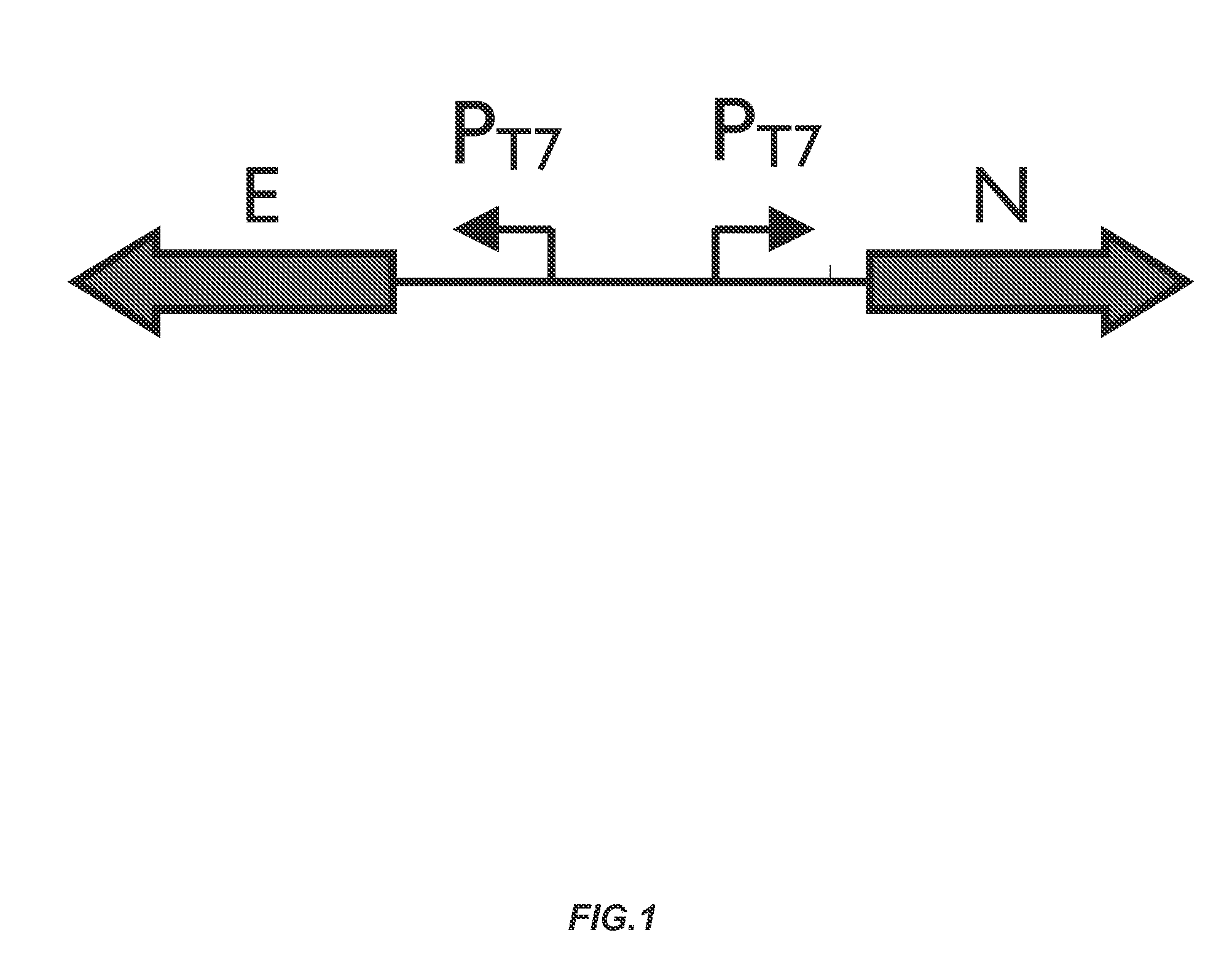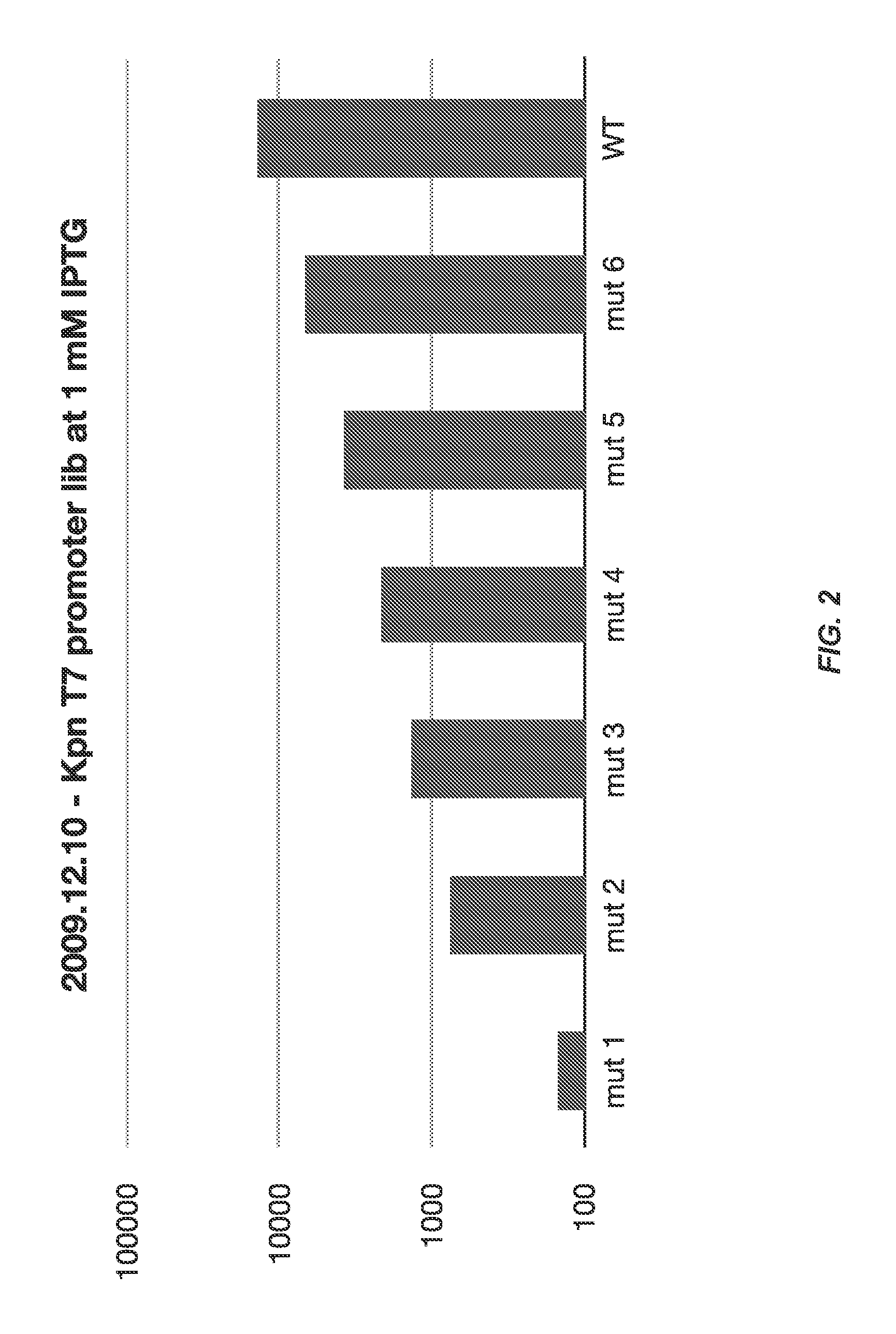Synthetic gene clusters
a gene cluster and synthetic technology, applied in the field of synthetic gene clusters, can solve the problems of reducing activity, reducing activity, and reducing the process of simplification and modularization
- Summary
- Abstract
- Description
- Claims
- Application Information
AI Technical Summary
Benefits of technology
Problems solved by technology
Method used
Image
Examples
example 1
Use of the Nelder-Mead Method to Optimize Efficiency of Operon Discovery
[0180]This examples illustrates how to recombinant and computationally manipulate and select native gene cluster coding sequences and heterologous regulatory sequences. We have termed this process “refactoring”, which comprises optimization of multiple genes, regulation of the gene cluster, and establishment of the genetic context for the biological circuit. Refactoring complex gene clusters and engineering metabolic pathways requires numerous iterations between design, construction and evaluation in order to improve a desired system property, e.g. higher product titers, lower toxicity, or improved nitrogen fixation.
[0181]One common way to affect these properties is to modify gene expression levels within the system, even if the direct relationship between gene expression and the system property is unknown. Making quantitative changes to gene expression can be achieved through the use of regulatory elements, e.g...
example 2
Refactoring Nitrogen Fixation
[0196]This example demonstrates the method of refactoring the nitrogen fixation gene cluster. The method includes steps that comprise: 1) removing host regulation and implement synthetic, orthogonal regulation; 2) tracking the contribution of each regulatory part to gene cluster function; 3) promoting modularity and integration with synthetic circuits; and 4) creating a platform amenable to rational optimization. In certain embodiments, the method of refactoring nitrogen fixation comprises reducing cluster to characteristic genes and assembling synthetic cluster.
[0197]The nif gene cluster from Klebsiella oxytoca has been one of the primary models for study of the nitrogenase enzyme (FIG. 7; see, Rubio and Ludden, Maturation of Nitrogenase: a Biochemical Puzzle, J. Bacteriology, 2005). It is a concise gene cluster, encompassing 20 genes in 7 operons within 25 kb of DNA. The nitrogenase enzyme is composed of two major units, Component I and Component II, t...
example 3
Refactoring the Bacterial Type III Secretion System (T3SS)
[0213]This example illustrates the use of the method described herein to completely refactor the Bacterial type III secretion system (T3SS). This example also illustrates that the refactored synthetic operons of T3SS are controllable and function independently of all native control and regulation.
[0214]Bacterial type III secretion systems (T3SS) are valuable because, unlike conventionally used Sec and Tat pathways, they translocate polypeptides through both inner and outer membranes. This enables the delivery of protein directly to culture media, which can be one of the critical requirements in engineered bacterial technology. For example, toxic proteins can be removed from the cytoplasm without being allowed in the periplasm and functional enzymes (e.g., cellulases) which need to work outside the cell, can be delivered directly into the media.
[0215]However, the difficulty with utilizing T3SS in engineered bacterial systems i...
PUM
| Property | Measurement | Unit |
|---|---|---|
| Ratio | aaaaa | aaaaa |
| Distance | aaaaa | aaaaa |
| Level | aaaaa | aaaaa |
Abstract
Description
Claims
Application Information
 Login to View More
Login to View More - R&D
- Intellectual Property
- Life Sciences
- Materials
- Tech Scout
- Unparalleled Data Quality
- Higher Quality Content
- 60% Fewer Hallucinations
Browse by: Latest US Patents, China's latest patents, Technical Efficacy Thesaurus, Application Domain, Technology Topic, Popular Technical Reports.
© 2025 PatSnap. All rights reserved.Legal|Privacy policy|Modern Slavery Act Transparency Statement|Sitemap|About US| Contact US: help@patsnap.com



